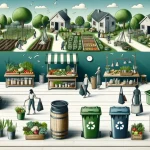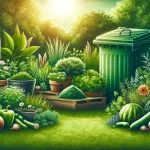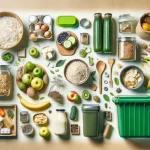
Discover easy and creative upcycling projects for beginners. Transform old items into new treasures with these simple DIY ideas.
Upcycling Projects for Beginners
Key Takeaways:
- Upcycling projects for beginners are simple DIY tasks that transform old items into new, useful, or decorative pieces.
- These projects include turning jars into storage containers, crafting old t-shirts into shopping bags, and repurposing furniture.
- Upcycling reduces waste, saves money, and allows for creative expression.
Welcome to the world of upcycling projects for beginners!
If you’re looking to add a personal touch to your home while reducing waste, you’ve come to the right place.
We’ll guide you through simple and fun projects that breathe new life into old items, turning them into stylish and eco-friendly treasures.
Introduction: Embracing Upcycling for a Sustainable Future
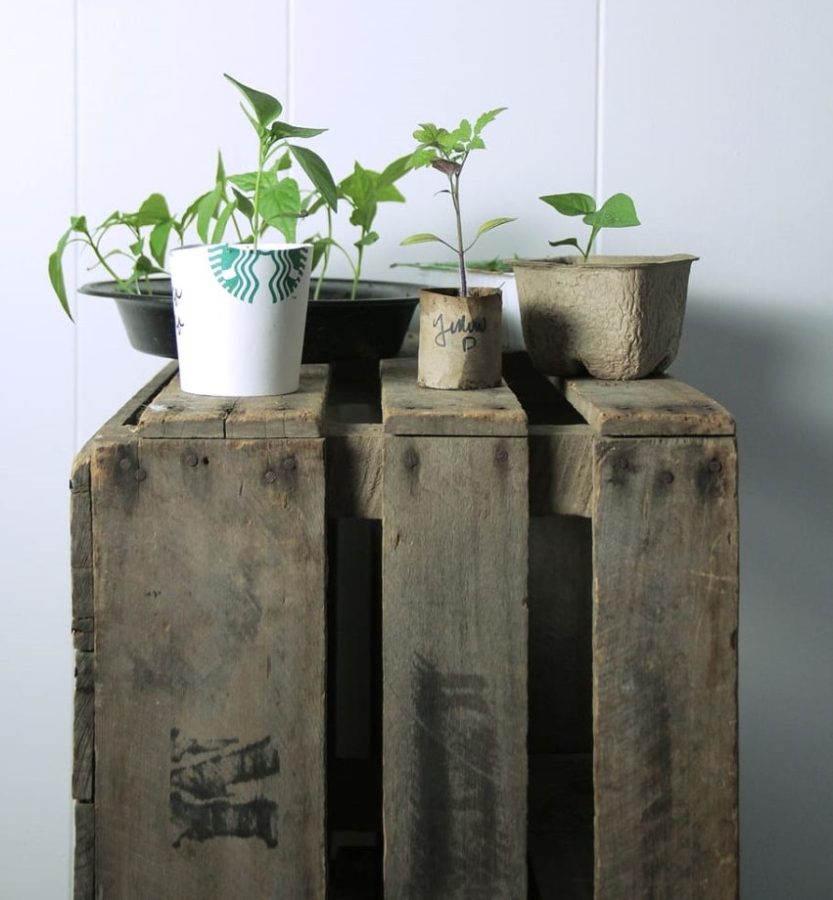
Upcycling is a creative and environmentally friendly way to breathe new life into old items.
By transforming discarded materials into useful or decorative objects, upcycling offers numerous benefits for both individuals and the planet.
This practice is an essential component of zero-waste living, as it reduces the amount of waste sent to landfills and conserves natural resources.
The Essence of Upcycling
Upcycling is more than just a trend; it’s a sustainable approach to living.
By reimagining old clothes, furniture, or household items, you can create something new and unique without the need for additional resources.
This not only minimizes waste but also adds a personal touch to your surroundings.
Zero-Waste Living and Upcycling
Adopting upcycling practices is a great way to embark on a zero-waste journey.
It encourages mindful consumption and helps reduce the demand for new products, which in turn lowers your carbon footprint.
Upcycling is a practical and enjoyable way to contribute to a more sustainable world.
A Beginner’s Guide to Upcycling
Starting with upcycling projects doesn’t require expert skills or expensive tools.
Beginners can easily find inspiration from everyday items like old t-shirts, jars, or cardboard boxes.
Simple projects like turning a t-shirt into a tote bag or repurposing a jar as a candle holder are great ways to start your upcycling journey.
Understanding Upcycling: More Than Just Recycling
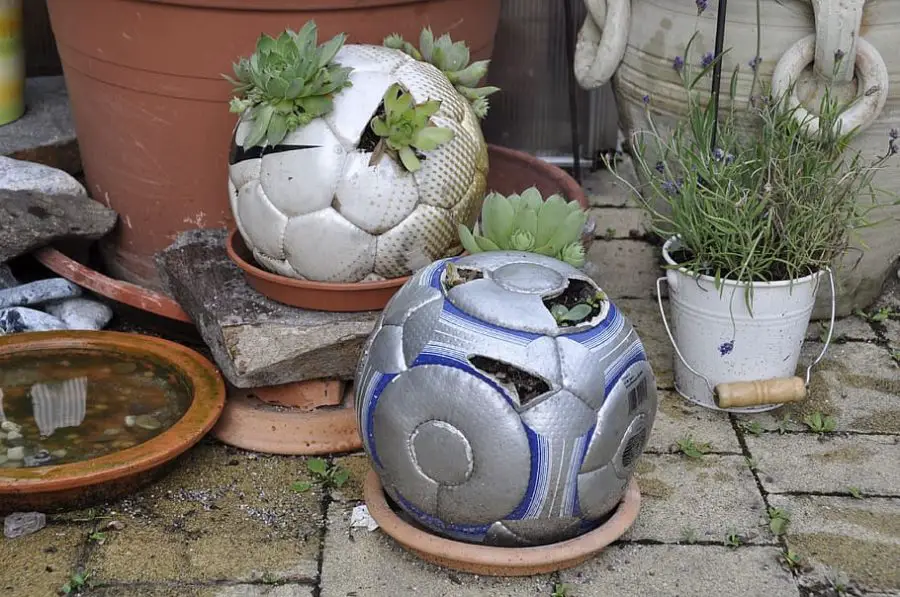
Upcycling is a creative process that transforms waste materials or unwanted products into new materials or products of better quality or for better environmental value.
It’s about taking something that is no longer in use and giving it a new purpose.
This practice is rooted in the principles of sustainability, creativity, and resourcefulness.
The Principles of Upcycling
The core principles of upcycling include reducing waste, conserving resources, and enhancing value.
By upcycling, you’re not just reusing an item; you’re elevating its worth and extending its lifecycle.
It’s about seeing the potential in what others might consider trash and turning it into treasure.
Upcycling vs. Recycling vs. Downcycling
While upcycling, recycling, and downcycling all aim to reduce waste, they differ in their approaches and outcomes:
- Upcycling: Takes waste materials or unwanted products and transforms them into something of higher quality or value. For example, turning an old ladder into a stylish bookshelf.
- Recycling: Converts waste into reusable material. For example, melting down plastic bottles to create new plastic products. However, recycling often involves breaking down materials, which can reduce their quality.
- Downcycling: Involves converting materials into new products of lesser quality. For example, using recycled paper to make tissue paper.
Understanding these differences is crucial for beginners to grasp the essence of upcycling and its unique role in sustainable living.
Benefits of Upcycling: A Win-Win for You and the Planet
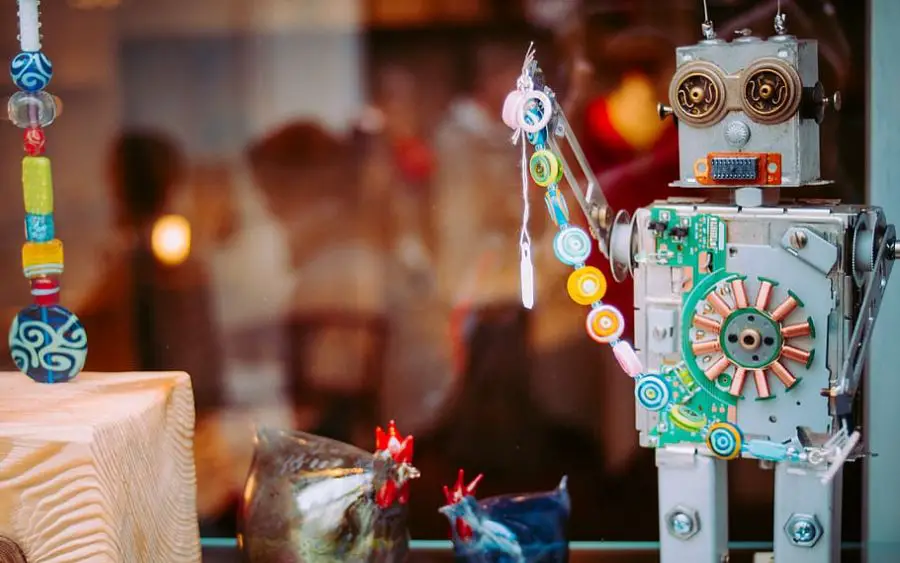
Upcycling offers a myriad of benefits, both for the environment and for individuals.
By embracing this sustainable practice, you can make a positive impact on the planet while unleashing your creativity and adding a personal touch to your home.
Environmental Impact
- Reducing Waste: Upcycling plays a crucial role in waste reduction. By giving old items a new purpose, you’re keeping them out of landfills and reducing the need for new materials.
- Conserving Resources: Upcycling minimizes the demand for raw materials, conserving natural resources and reducing the environmental footprint associated with manufacturing new products.
- Lowering Carbon Emissions: By repurposing existing items, upcycling reduces the energy consumption and greenhouse gas emissions associated with producing new goods.
Personal Benefits
- Creativity: Upcycling allows you to express your creativity and innovation. Whether you’re transforming old clothes into fashion statements or turning discarded wood into furniture, the possibilities are endless.
- Cost Savings: Many upcycling projects can be done with materials you already have at home, saving you money on buying new items.
- Unique Décor: Upcycled items add character and uniqueness to your space. Each piece tells a story and reflects your personal style, making your home truly one-of-a-kind.
Embracing upcycling not only benefits the environment but also enhances your life with creativity, cost savings, and a distinctive flair in your home decor.
Getting Started with Upcycling: Laying the Foundation
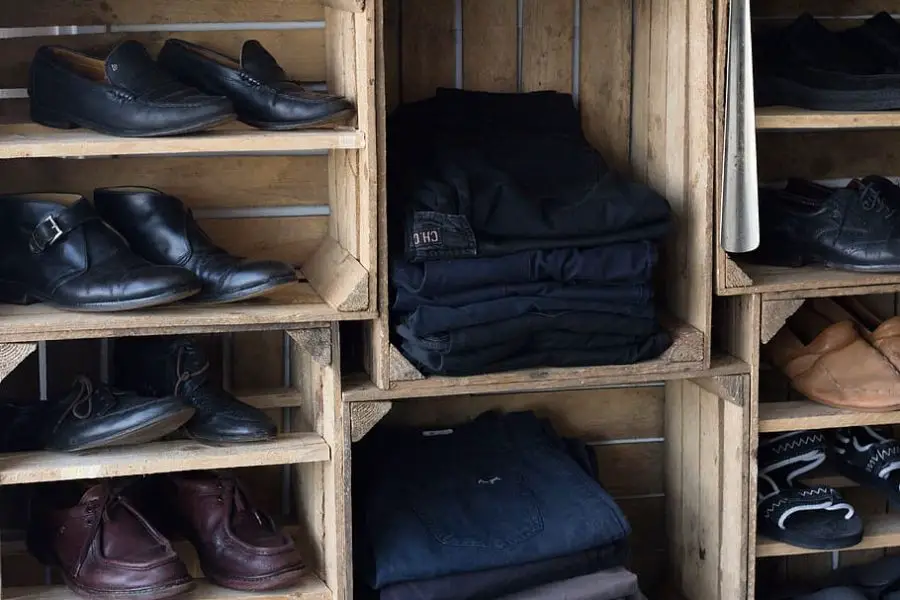
Upcycling is an accessible and rewarding hobby that anyone can start with minimal investment.
By choosing the right materials and tools and finding inspiration, you can begin your upcycling journey with confidence.
Choosing the Right Materials and Tools
- Materials: Start by looking for items you already have at home that are no longer in use, such as old clothes, furniture, jars, or cans. Thrift stores, flea markets, and garage sales are also great places to find materials for your projects.
- Tools: The tools you’ll need depend on the projects you choose. Basic tools like scissors, a glue gun, paintbrushes, and a screwdriver can cover many simple upcycling tasks. As you progress, you might need more specialized tools like a sewing machine or a drill.
Finding Inspiration and Ideas
- Online Resources: Websites like Pinterest, Instagram, and DIY blogs are treasure troves of upcycling ideas. You can find tutorials and inspiration for projects of all skill levels.
- Books and Magazines: Look for books and magazines dedicated to upcycling and DIY projects. They often contain step-by-step guides and helpful tips.
- Community: Joining online forums or local workshops can provide support and inspiration from fellow upcyclers. Sharing ideas and experiences with others can spark new creative projects.
Starting your upcycling journey is as simple as finding an old item and imagining what it could become.
With the right materials, tools, and a bit of inspiration, you can transform the ordinary into the extraordinary.
6 Simple Upcycling Projects for Beginners: Your First Steps to Sustainability
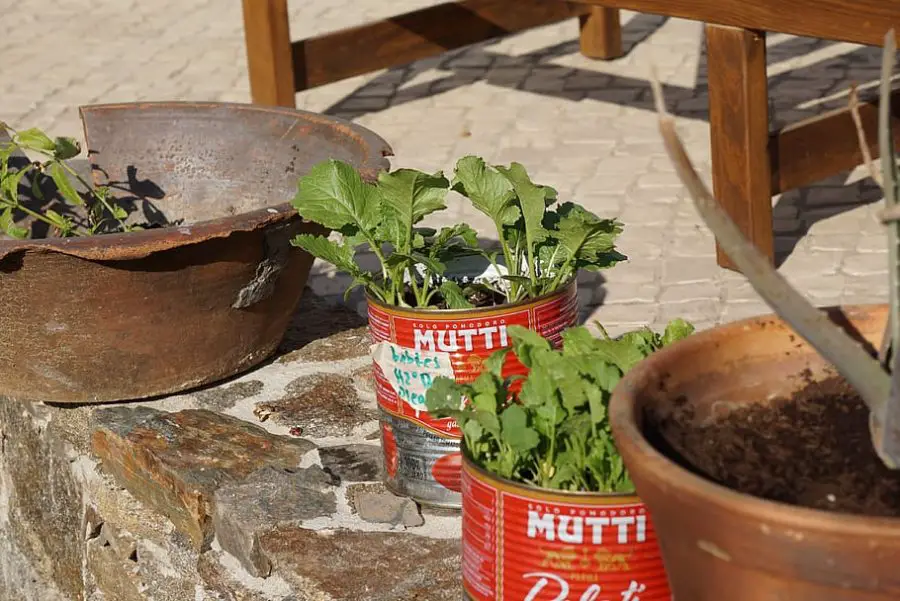
Upcycling doesn’t have to be complicated. Here are some easy and fun projects to get you started on your upcycling journey.
These projects are perfect for beginners and can be completed with minimal tools and materials.
1. Transforming Jars into Storage Containers
Old jars can be easily transformed into stylish storage containers for your kitchen, bathroom, or office.
Simply clean the jars, remove any labels, and decorate them with paint, fabric, or ribbon.
You can use them to store spices, cotton balls, or office supplies.
2. Crafting Old T-Shirts into Reusable Shopping Bags
Turn your old t-shirts into eco-friendly shopping bags with just a few cuts and knots.
Cut off the sleeves and neckline to create handles, and tie the bottom hem to close the bag. You can even decorate the bag with fabric paint or patches.
3. Upcycling an Old Dresser with Hand Painting
Give an old dresser a fresh coat of paint and a new lease of life.
Sand the surface, apply a primer, and then paint it in your desired color. Add new knobs or handles for a finishing touch.
This project can transform a drab piece of furniture into a focal point in any room.
4. Creating a DIY Teacup Birdfeeder
Repurpose an old teacup and saucer into a charming birdfeeder.
Glue the cup to the saucer, attach a string or chain, and hang it in your garden.
Fill it with birdseed and enjoy watching the birds visit your handmade feeder.
5. Repurposing a Ladder as a Bookshelf
An old ladder can be repurposed into a unique bookshelf with minimal effort.
Clean the ladder, paint it if desired, and lean it against a wall. Use the rungs to display books, plants, or decorative items.
It’s a great way to add a rustic touch to your home.
6. Making Tin Can Planters for Small Plants
Empty tin cans can be transformed into cute planters for small plants or herbs.
Clean the cans, remove any sharp edges, and decorate them with paint or fabric.
Punch drainage holes in the bottom, fill them with soil and plant your favorite herbs or succulents.
These simple upcycling projects are a great way to start your journey toward a more sustainable lifestyle.
Not only do they reduce waste, but they also allow you to add a personal touch to your home.
Tips for Successful Upcycling: Unlocking Your Creative Potential
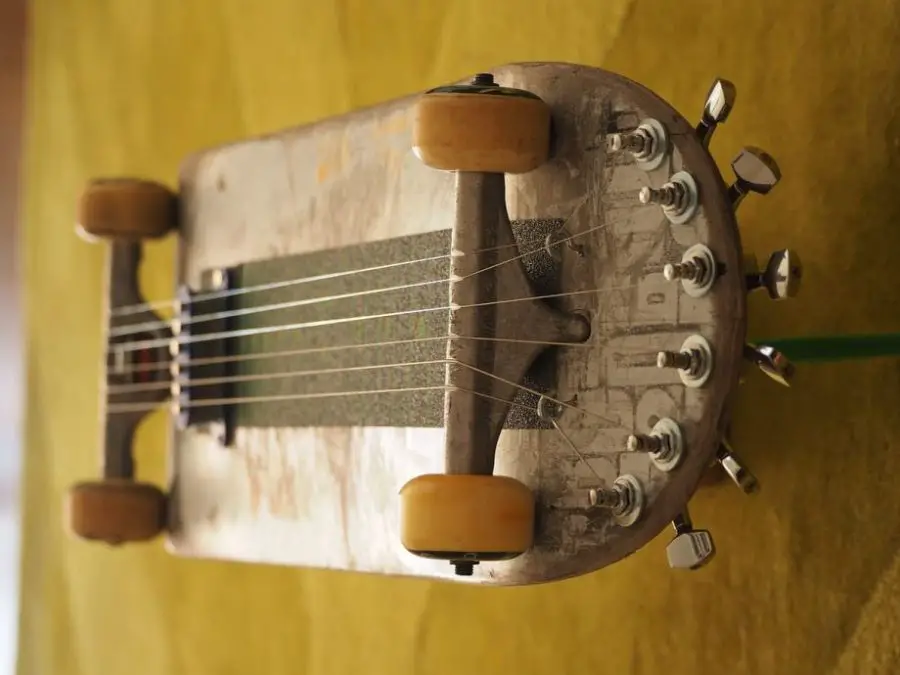
Upcycling is an art that allows you to transform old items into something new and beautiful.
To ensure your projects turn out well, here are some tips to keep in mind:
Preparing Materials Properly
- Clean and Repair: Before you start, make sure your materials are clean and in good condition. Repair any damages that might affect the integrity of your finished project.
- Sand and Prime: For items that will be painted, such as furniture or wood, sanding and priming are essential steps to achieve a smooth finish.
- Gather Supplies: Make sure you have all the necessary tools and materials before you begin. This will save you time and ensure a smoother workflow.
Being Creative with What You Have
- Think Outside the Box: Look at everyday items in a new light. An old ladder can become a bookshelf, and a mason jar can turn into a light fixture.
- Mix and Match: Don’t be afraid to combine different materials and textures. For example, use fabric scraps to create a colorful quilt or combine metal and wood for an industrial look.
- Personalize: Add your own personal touch to your projects. Whether it’s a unique color scheme or a hand-painted design, your creativity is what makes your upcycled items special.
Embracing Imperfections for a Unique Touch
- Celebrate Character: Imperfections can add character and charm to your projects. A distressed finish on furniture or a patchwork design on a bag can make your item one-of-a-kind.
- Work with the Flaws: Instead of trying to hide imperfections, find ways to incorporate them into your design. For example, use a crack in a piece of wood as a design element on a shelf.
- Let Go of Perfection: Upcycling is about creativity and sustainability, not perfection. Embrace the quirks and enjoy the process.
By following these tips, you’ll be well on your way to creating successful and beautiful upcycled projects.
Remember, upcycling is not just about saving money or reducing waste; it’s also about expressing your creativity and making something that’s uniquely yours.
FAQ Section: Navigating the World of Upcycling
Starting an upcycling project can be exciting, but it’s natural to have questions about how to begin.
Here are some common queries and answers to help you get started on your upcycling journey.
Q. What materials can I start upcycling with?
A. You can start with everyday items like jars, t-shirts, old furniture, and more.
Look around your home for things you no longer use or visit thrift stores and flea markets for unique finds.
Almost anything can be upcycled with a bit of creativity.
Q. Do I need any special tools for upcycling?
A. Basic tools like scissors, paint, and glue are often enough for simple projects.
As you progress, you might need more specific tools, such as a sewing machine for fabric projects or a drill for woodworking.
Start with what you have and invest in new tools as needed.
Q. How can I find ideas for upcycling projects?
A. Look for inspiration online, in magazines, or from your own imagination.
Pinterest, Instagram, and DIY blogs are great places to find creative ideas.
You can also join online communities or attend workshops to learn from others and share your own projects.
Conclusion: Embracing Upcycling for a Better Tomorrow
As we’ve explored the world of upcycling, it’s clear that this sustainable practice offers numerous benefits.
Not only does it help reduce waste and conserve resources, but it also allows us to express our creativity and add a personal touch to our homes.
Embracing Creativity
Upcycling is an invitation to unleash your creativity. Each project is an opportunity to experiment with colors, textures, and designs.
By personalizing your upcycled items, you create pieces that reflect your unique style and make your space truly yours.
Making an Impact
It’s important to remember the positive environmental impact of upcycling.
Every item you repurpose is one less piece of waste in a landfill. By choosing to upcycle, you’re making a conscious decision to contribute to a more sustainable and eco-friendly world.
Continuing the Journey
As you gain confidence and skills, don’t be afraid to tackle more complex upcycling projects.
The journey of upcycling is one of continuous learning and growth.
Embrace the challenges and celebrate your successes as you explore new ways to transform the old into something new and beautiful.
In conclusion, upcycling is more than just a hobby; it’s a lifestyle that promotes sustainability, creativity, and mindfulness.
Whether you’re a beginner or an experienced upcycler, there’s always something new to discover and create.
So, grab your tools, find your next project, and start your upcycling journey today!
Read more: Mastering Zero-Waste Living: 7 Easy Tips and Tricks
Resources
To further explore upcycling and find inspiration for your projects, check out the following resources:
- Upcycle That: A website dedicated to upcycling ideas and projects, offering tutorials and inspiration for transforming everyday items into something new.
- Instructables – Upcycling Projects: A community-driven platform where users share DIY projects, including a wide range of upcycling tutorials with step-by-step instructions.
- Pinterest – Upcycling Ideas: A visual discovery engine where you can find countless upcycling ideas and projects, from simple crafts to more complex furniture makeovers.
These resources are great starting points for beginners and experienced upcyclers alike.
Whether you’re looking for specific project instructions or general inspiration, you’re sure to find something to spark your creativity.



